Managing food and beverage operations in a multi-site business is a monumental task.
Keeping all the plates spinning while dealing with spreadsheet woes, multiple production plans, food cost worries and complex admin is a challenge to even the most seasoned managers in hospitality.
Ask any caterer, restaurant owner or ghost kitchen operator, and they will tell you the same: keeping tabs on back-of-house processes is notoriously complicated.
There are a gazillion moving parts and they all depend on each other like a team of relay runners.
In this post, we share what we’ve learned about the biggest challenges in food service management.
And how to fix them, without putting extra pressure on your already hard-working teams.
11 Challenges In Multi-Site Food And Beverage Management (And The Fix)
A well organised operational structure is the backbone of a successful food business. You need control of the BoH to ensure consistency, quality and profitability.
But that’s easier said than done.
F&B management is under constant stress when they have to deal with disorganised systems.
Manually updating spreadsheets, struggling with complex calculations, and worrying about the accuracy of allergen information are just some of the issues that can keep you up at night.
The problem is magnified the more outlets you have.
How to keep quality and service consistent across outlets? How to ensure that employees follow purchasing guidelines?
Let’s look at the problems facing F&B management in more detail and see if there’s a way to solve them.

1. “My processes are inefficient – arrrgh spreadsheets!”
It’s easily the most common issue in multi-unit F&B management. Key information is spread across spreadsheets, documents, and folders physically and digitally.
Recipes, supplier details, food costs, stock counts and financial data are stored in different formats in multiple locations.
Or worse: notebooks.
Example
The manager of a fast-casual restaurant notices a certain dish is proving popular and wants to double-check the actual margins. He starts searching through a bunch of spreadsheets, looking at invoice and delivery notes, but still struggles to find a reliable number.
Solution: Ditch Spreadsheets And Centralise Your Data
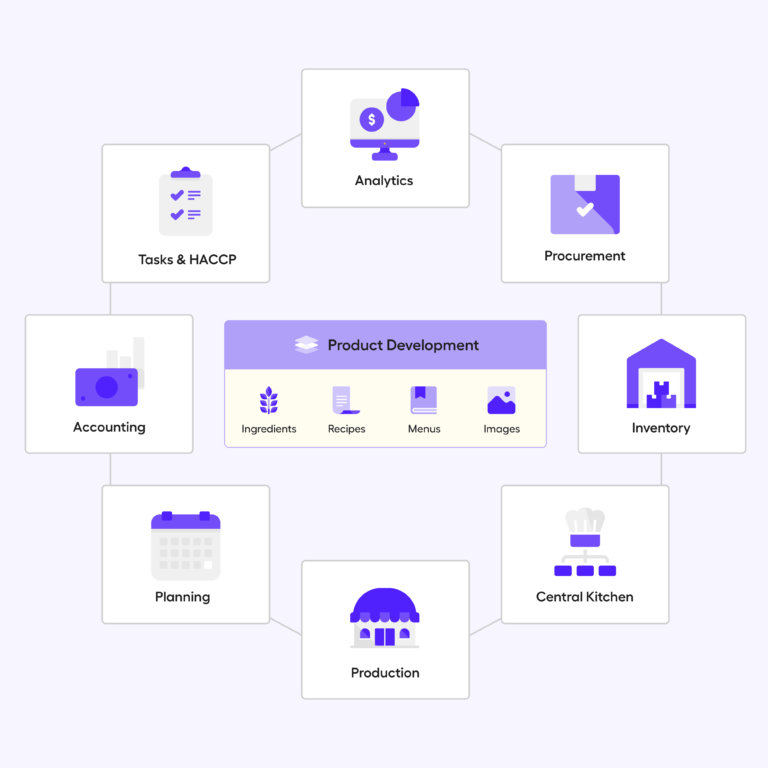
An all-in-one solution that automatically syncs workflows and data means staff won’t have to log in to seven different apps or consult 20 spreadsheets to look up margins, stock status, recipes, invoices, or supplier details.
Not only is everything in one food and beverage management system, which is a huge time-saver if you’re managing a big operation, but it will also help you dial in all the important restaurant business metrics.
With Apicbase, you can prepare for what lies ahead, rather than constantly looking back at ancient delivery notes, invoices, POS-data, stock counts, and purchase orders.
Simply open your laptop to find the data neatly organised in a single dashboard.
2. “I don’t have a handle on food cost”
With so many variables, understanding actual CoGS can seem impossible. Let alone keeping them under control.
Because, even if you can produce accurate data, how to get reliable calculations of your food cost metrics? You have to take into account both real-time recipe costs and actual food cost based on inventory depletion to determine your food cost percentage and variance. (Learn everything about food cost formulas.)
The example below speaks volumes about the impact food cost control has on your bottom line.

So how to get there?
Solution: Leverage Real-Time Data To Make Reliable Calculations
You can use spreadsheets of course, but numbers fluctuate all the time. Are you updating all the time?
With cloud-based software, the numbers are updated in real-time so you don’t have to worry about it.
The Apicbase food costing tool automatically renews all recipe and menu costings calculations when pricing is entered. You no longer need to spend time looking up price changes, updating spreadsheets and then changing technical sheets and recipes.
And because the system operates in the cloud, all updates are instantly available group-wide. No need to email, text or whatsapp anyone.
3. “I don’t know my profitable dishes”
If you don’t have a handle on food costs, you don’t know if dishes are profitable.
That means you can’t optimize your menus. You could be losing money on every dish sold.
You might think you know which recipes are profitable but do you really? Do you crunch the numbers consistently and continuously?
It just takes one ingredient coming in at the wrong price, or an over-generous chef giving too large of a portion and your entire calculation is thrown off.
Solution: Optimize Your Menus Using Sales & Recipe Data
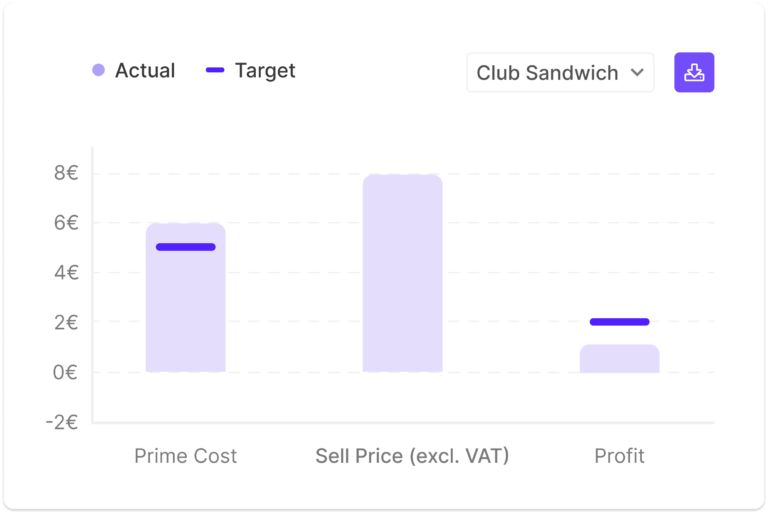
Combine the information about your most popular dishes with the data from the most profitable ones.
When you leverage sales analytics in combination with the recipe costs you can accurately determine which dishes are both profitable and popular to improve your menu engineering.
Once you get a handle on your food costs, it’s not such a daunting task to figure out your most profitable dishes and optimize your menus.
Menu engineering is more effective when you have quick access to sales numbers and real-time recipe costs. That way you’ll be able to build a well-balanced menu with big margin items that sell well.
Engineer big margin menus with items that sell well.
4. “We struggle to deliver dishes consistently”
Consistency is key to a restaurant’s success.
With so many staff members in different locations, how to keep tabs on product consistency? Without it, you risk losing your reputation. Your executive chef can’t be everywhere at once so it’s a real challenge to deliver staff training, clear procedures and on-going management across locations.
Just a handful of poor dishes at a few locations can lead to bad reviews.
How to get a handle on procedures and ensure that staff is trained group-wide to deliver a quality product every time?
Solution: Foolproof Food Production Plans
The key to product consistency is to plan in detail.
MEP-lists, SOPs and tech-sheets are roadmaps to getting things done the right way.
They help your teams dial in production, regardless of where they are located or who is doing the chopping and dicing.
Solid production plans keep your teams up to speed and operations on track. It also results in happier staff because everyone understands their responsibilities, and they have the means to excel at their job.
All of this starts with having your recipes properly tested, catalogued and costed.
Apicbase keeps your plans, food costs, recipes and all things F&B centralised. It can generate detailed prep lists to ensure staff gets recipes right. Everyone has access to up-to-date information and guidelines, which improves quality and consistency across the board.
5. “Allergen reports keep me up at night”
Allergies can be the stuff of nightmares.
You could be in serious legal hot water if you make a mistake. It is a tricky business. That is why many chefs and managers don’t feel confident when making allergen reports or generating food allergen labels.
Keeping track of allergens is a difficult task with serious consequences. And in many areas, it is a legal requirement to accurately report allergens.
To make things more complicated, recipes change, allergens need to be updated, and staff need to be trained to communicate properly between customers and the kitchen.
Here is a free guide to help you set up a bulletproof food allergen management system.
Solution: Automated Allergen Reports
Apicbase allergen management software has all the information to tell you which allergens are in which dishes. It automatically gathers the information and labels each recipe accordingly.
Managers can print out labels for packaged meals and staff can quickly check allergen information so they are 100% sure they are giving the customer accurate information.
6. “Nutritional values? I’m no scientist.”
Increasingly, customers are health conscious.
They want to know what goes into their food, down to the precise nutritional values. And if you are producing ready-to-eat products, you may be required to provide that information by law.
F&B managers, however, aren’t trained nutritional scientists and the nutritional value calculations are quite complex.
The Nutri-score label is a good example. It is a great label but the maths behind it are next level.
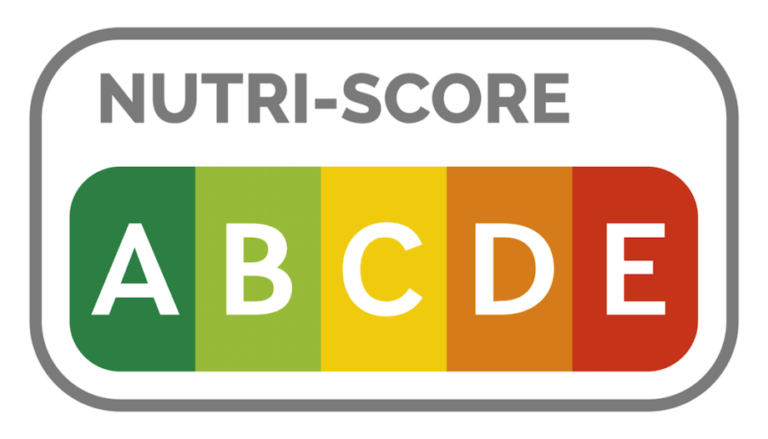
Solution: Automated Nutritional Value Calculations
When your data is centralised, you know exactly what – and how much – of each ingredient is going in a dish. So that is step one. But it is still a huge challenge to work out the nutritional values and present them in a coherent way to customers. That is step two.
Apicbase uses your recipes to calculate the nutritional values. You can easily print labels, including the Nutri-score label, for menus and menu-items. Your teams – both FoH and BoH – can be given access to the data. And the dietary info is used to populate your kiosks and online ordering platforms via API
7. “I have no control over stock levels”
Your inventories are the canary in the coal mine. If stock control at a unit is sub-par, you better prepare for inflated food costs across the board.
Unfortunately, you are faced with obstacles. Manual stock counts are time-consuming and staff mostly isn’t too fond of doing them. And then you have the spreadsheet thing. Because calculating f&b stock value means navigating lots of ‘m.
No problem you say. You rely on supplier invoices and delivery notes to keep track of stock levels. Sure, but then you have no idea about what is in stock at any one time. And if you don’t know what you have, you can’t forecast what you need to purchase.
By the time you have counted stock manually and made the calculations, prices have changed and stock levels have fluctuated. Also, you need to take wastage, pilferage and breakage into account.
Aaaargh!
Inventory control is a losing game. Or is it?
Solution: A Centralised F&B Inventory Management System
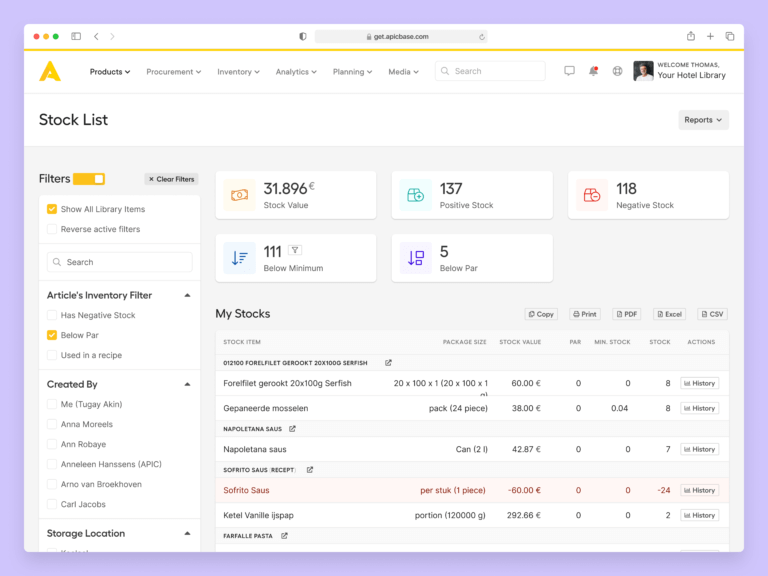
F&B stock data needs to sync with other back-of-house processes to be useful. (See point 3 & 4 of this article, and you’ll get what we mean). So that’s what we did.
Apicbase restaurant inventory management software automates stock depletion and control using data from your POS system, purchase orders and production. It allows managers to easily access stock reports and compare theoretical with the actual inventory levels.
You’ll identify uncontrolled food waste due to theft, over portioning or squandering before it kills profit margins.
Say goodbye to spreadsheets and error-prone manual calculations.
8. “Staff orders too much or not enough”
Keeping stock at an optimum level is a constant balancing act.
With hundreds of ingredients coming in from multiple suppliers, working with spreadsheets and manually managing inventory is a nightmare.
Overstocking leads to huge amounts of waste. And food cost unavoidably goes up. With under-ordering on the other hand you risk disappointing customers and losing revenue.
It is vital to get on top of procurement. For that, you need to work systematically and avoid guesswork at all cost.
Here is a free guide detailing how to develop a reliable f&b inventory system for a multi-site foodservice organisation.
Solution: Data-Driven Procurement
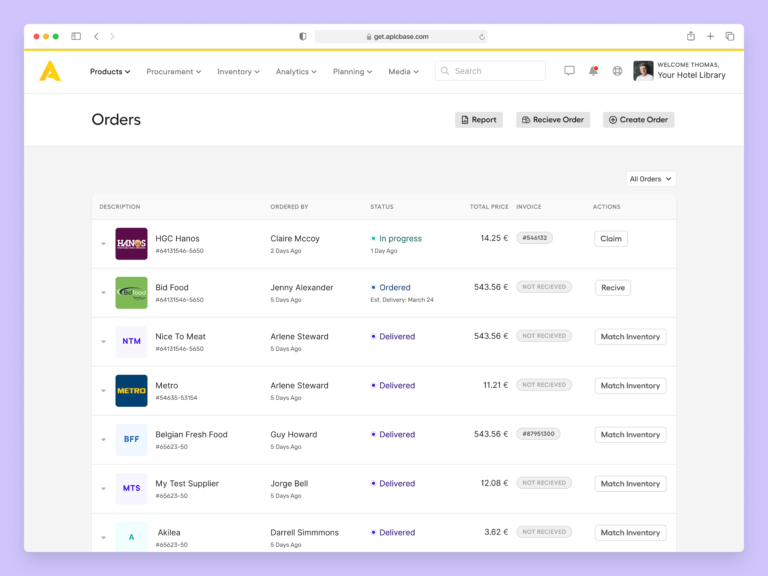
Let’s see what we already have: you have recipe costs under control, the menus are optimized, so you know exactly where your profits lie, and you have production dialled in.
The next step is now super easy: purchase raw materials, taking all of the above into account.
Well, it’s easy if you are using fully integrated purchasing software. And that’s where we come in.
With Apicbase you turn bills of materials into purchase orders, in seconds. The POs take your recipes, stock levels, the delivery minimums and package sizes of each vendor into account.
Use the tools to improve purchasing efficiencies group-wide:
- Pinpoint the weak points and plug the gaps.
- Make informed decisions to prevent over-ordering while ensuring you never run out of supply.
- Suppliers are loaded into the system for easy comms. The system suggests what you need to order. You can manually oversee and adjust if needed.
- When suppliers are integrated into the system, you get daily pricing data.
- Set up automated up-to-par purchase orders for key items, so they never run out.
9. “How much are we wasting?”
The impact of food waste on food costs is huge and it happens all along the chain of processes.
And with so many people working across sites, it’s hard to keep track. Specifically, because small mistakes have large consequences.
Example
Your chefs are portioning steak by eye and being over-generous by only 10g. Let’s say the prime beef comes in at €10 per kilo and you sell 1.000 steaks per night across 50 locations. That’s 10c per steak per night you are giving away. After a year that amounts to about €37.200 of profits lost.
Unnecessary food waste inflates food costs and bites into your margins. Luckily it’s a manageable cost.
Solution: Use The Data To Pinpoint Squandering
Keeping wastage to a minimum is the alpha and omega of any back of house manager. Whether wastage occurs because of over-portioning, over-ordering, pilferage, poor intake procedures or any other reason, the outcome is the same: it blows your food costs sky-high.
The thing is, you won’t know what to fix if you don’t know why – and where – it happens.
Apicbase digitises your back of house and helps you make sense of the information. The software takes the data, calculates how much stock goes up in smoke and generates detailed performance reports for every outlet.
10. “How do I manage multiple sites efficiently?”
It’s one thing to get a team working effectively at one location. As soon as you add more units, things become exponentially more challenging.
Many food businesses have met their downfall when trying to expand beyond their first few locations. Even successful enterprises struggle with the complexity of new sites being added to the operation.
As an organisation grows, it has to start thinking in a different way. Solid procedures and monitoring tools might have been nice-to-have before, they become vital the second you open the doors to a brand new location.
HQ needs to know what is going on: are the local managers hitting their targets, aren’t they wasting too much, are they buying from the agreed vendors and so on?
Keeping things under control is a daunting task.
Solution: Site Management In The Cloud
The key to multi-outlet management is to centralise all your data. Recipes, as the core data, are in a central library along with performance information about the outlets.
Makes sense, right? How else are you going to keep an overview of production, procurement, inventory and financials of +100 locations – by emailing reports back and forth? Didn’t think so.
But this is easier said than done. What if different outlets require different menus and recipes, and have different suppliers and procedures?
Example
Hotel chains that operate worldwide will simultaneously run summer and winter menus in different cities. The same goes for, restaurant groups that run different concepts with totally different menus in different cities under one umbrella group.
How will all staff at all locations consistently access the data system at such a distance? Here’s how:
In Apicbase, outlets can have their own menus without losing the benefits of a centralised system or its number-crunching powers.
If you operate a central kitchen than locations can order ingredients and semi-finished products from there, while management is able to track the internal transfers. And stock levels on both ends are updated automatically to avoid costly errors.
11. “How do I maintain a functioning system going forward?”
How to ensure standards are upheld and procedures followed down the line?
It is easy to let standards slip if you take your eye off the ball. Even if you get everything running smoothly at all locations, there’s no guarantee this will continue into the future.
Solution: Tools To Monitor and Optimise Processes Continually
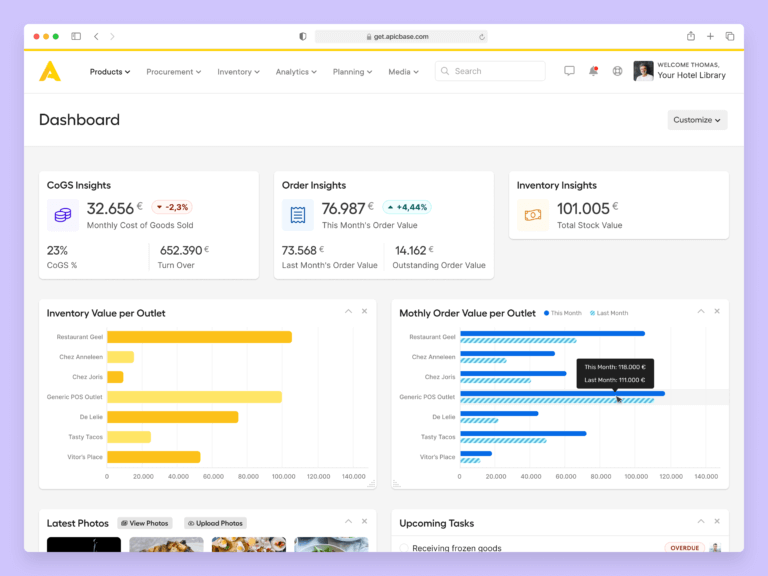
Keep your eyes in the money.
Once you have a working system in place, it’s time to iterate and optimize. Test, test, test, and continually improve your procedures, staff training, and processes as you learn what works best.
Apicbase builds this into the system. Detailed reports ensure you can take swift action so standards won’t slip.
The user management tools allow you to limit the number of actions an end-user can do in the system to avoid faulty entries or errors.
The Apicbase platform issues automated alerts if something isn’t right. For example, a dish doesn’t reach its target margin, or items are missing from the inventory.
The reporting tools give managers insights into margins, sales numbers, and even staff performance at a glance.
This gives you and your managers the hard data to make better decisions and optimise protocols.
Conclusion: Go From Spinning Plates To Optimising Production Cycles
- As you implement a centralised system, the daunting task of keeping all those plates spinning starts to become simpler.
- Once you have control of your data, production planning is more straightforward and menu engineering more effective.
- Small and big actions that used to take hours are reduced to a tap on a button, thanks to automation.
- When the processes in your tech ecosystem are under control, you immediately see the big picture. All the data you need to make better decisions are at your fingertips.
- Implementing a system like this will not only make the lives of staff and management easier, it will also put you ahead of 90% of the competition.
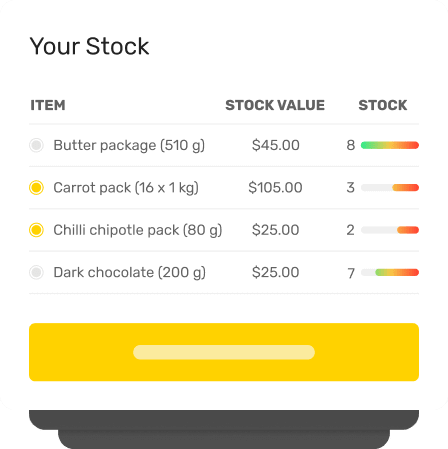
Use Multi-Unit F&B Management Software
Tell us about your goals and we’ll help you get there.

